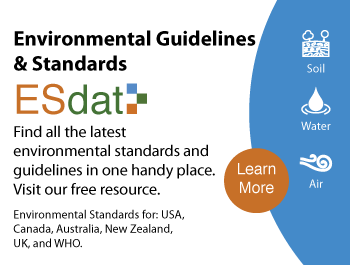The Environment Protection Authority (EPA), in collaboration with the state of New South Wales (NSW, Australia), is responsible for the provision of guidelines relating to waste in the NSW. Reforms are made to enforce the protection of the environment as well as the community. The Protection of the Environment Operations (Waste) Regulation 2014 was developed as a result of thorough consultation and review processes on the waste regulatory framework of NSW.
The NSW Waste Guide 2014 is divided into classifying waste, immobilizing waste, waste containing radioactive material, and acid sulfate soils. Additionally, it has a supplement to part 1, classifying waste. Classifying waste highlights the procedures followed in the classification of waste. Waste is thus chemically assessed and classified as special waste, liquid waste, pre-classified waste (hazardous, restricted solid, and general solid waste – putrescible or non-putrescible). Part 2 involves immobilizing waste and handles waste that contains high levels of contaminants and cannot be disposed to landfills. Immobilization ensures the waste is not released with a concerning level of contaminants. Part 3 entails assessing the level of radioactivity of waste, identifying hazardous waste, and calculating specific activity ratio and total activity ratio, which defines the category for which waste 3218.72is classified. Acid sulfate soil guidelines explain the procedures for handling potential acid sulfate soils before disposal and disposal below or above the water table and treatment and disposal of actual acid sulfate soils. Addendum to part 1 provides amendments made to waste classification and include specific contaminant concentration (SCC) values and toxicity characteristics leaching procedure (TCLP) for perfluorooctanoic acid (PFOA), perfluorooctane sulfonate (PFOS), perfluorohexane sulfonate (PFHxS) chemicals.
The NSW Waste Guide, therefore, provide procedures for waste regulations and licensing. It applies to households, waste facilities (organic processing facilities, local council operations, landfill operations, energy recovery operations), and industrial waste.
ESdat is a specialist environmental database system; used to validate and import a broad spectrum of Environmental Data and help users analyze and report it.
ESdat Online delivers a highly cost-effective and efficient approach to store your ongoing monitoring environmental data, optionally with a historical data upload provided as a getting started service. ESdat Online is perfect if you want a cloud-based system that collates and reports your ongoing laboratory and field results.
ESdat Server provides the advantages of ESdat Online with the option of adding ESdat Desktop for data experts to upload their historical data, effectively interrogate the raw data being used within the database, and automatically launch and send data to other Desktop Applications such as Surfer, ArcGIS and Excel.
A variety of complementary products are also available to help with related work, such as sample planning and electronic Chain of Custody (LSPECS), offline field data collection or bore logging (pLog), production of bore logs (ESlog), public portals and customized reporting.
All compiled environmental guidelines and standards are shown on the ESdat website. These are pre-loaded into ESdat Online.

Reference
NSW EPA (2021). Waste classification guidelines. Retrieved from https://www.epa.nsw.gov.au/your-environment/waste/classifying-waste/waste-classification-guidelines






